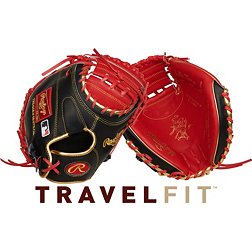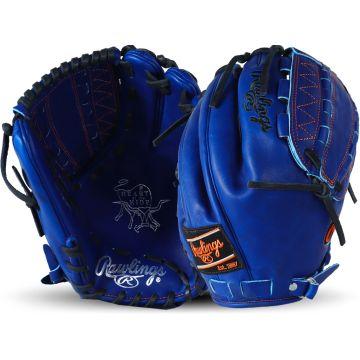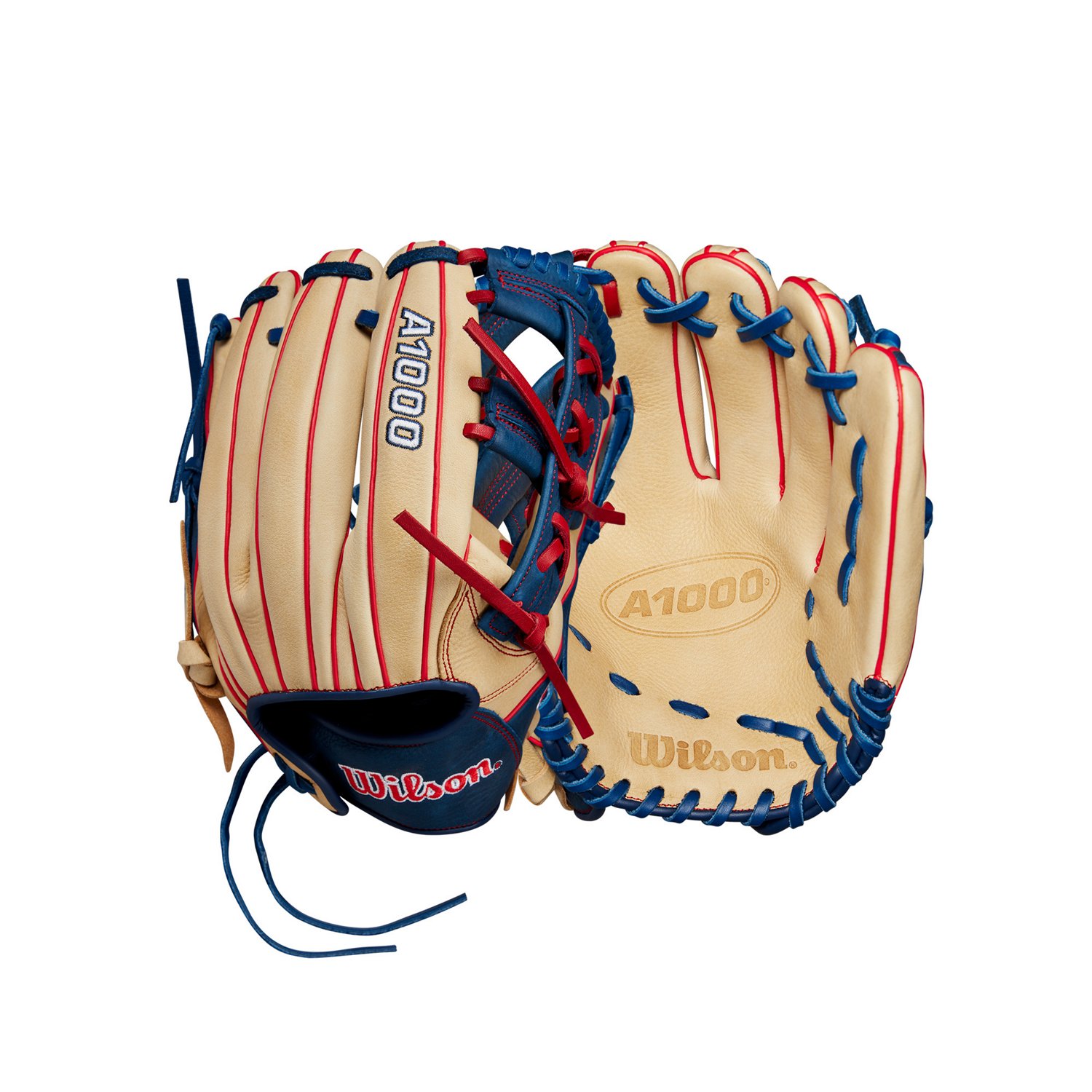
About Me
Baseball Gloves for Every Budget – Find the Best Deals Now
Baseball gloves are available for every budget, from budget-friendly options under $50 to premium leather gloves over $200. You'll find synthetic leather gloves for beginners, mid-range options from brands like Rawlings and Wilson for $50-$100, and high-performance gloves with advanced features for $100-$200. Youth players can benefit from adjustable gloves that accommodate growth. Position-specific gloves cater to infielders, outfielders, and catchers, each with unique characteristics. When choosing, consider your skill level, position, and budget. Regular maintenance, including cleaning and conditioning, is essential for all gloves. Exploring the subtleties of each category will help you make an informed decision for your playing needs.
Key Takeaways
- Budget-friendly options under $50 are ideal for beginners, featuring synthetic leather and position-specific designs.
- Mid-range gloves ($50-$100) from brands like Rawlings offer high-quality leather and position-specific features.
- High-performance gloves ($100-$200) provide premium leather, moisture-wicking linings, and advanced padding for serious players.
- Premium leather gloves ($200+) offer professional-grade patterns, pre-broken-in features, and reinforced web designs.
- Youth gloves with adjustable features accommodate growing hands and often use durable synthetic materials for affordability.
Budget-Friendly Gloves Under $50
Why spend a fortune on a baseball glove when you can find quality options for under $50? These budget-friendly gloves offer impressive performance and durability without breaking the bank - Visit ActiveGearAdvisor.com. While they may not have all the features of high-end models, they're perfect for casual players, beginners, or those on a tight budget
When shopping for affordable gloves, focus on reputable brands known for their quality, even in lower price ranges. Look for synthetic leather options, which are often more cost-effective and easier to maintain than genuine leather. Pay attention to the webbing style and pocket depth to guarantee proper ball control and safety during gameplay.
To maximize the lifespan of your budget glove, proper maintenance is essential. Regularly clean and condition the material, and store it in a cool, dry place. Break in your glove correctly to improve its performance and comfort. While these gloves may not last as long as premium options, with proper care, they can serve you well for several seasons.
Consider factors like position-specific designs and hand orientation when selecting your glove - Visit ActiveGearAdvisor.com. Remember, even budget-friendly options from the Best Pitching Gloves brands can provide reliable performance - Top baseball batting gloves at Active Gear Advisor and safety on the field
Mid-Range Options: $50-$100
How can you strike the perfect balance between quality and affordability in baseball gloves? The $50-$100 range offers a sweet spot for players seeking durability and performance without breaking the bank (Visit ActiveGearAdvisor.com). In this price bracket, you'll find gloves from reputable brands like Rawlings, Wilson, and Mizuno, each offering distinct features and materials
 Top Baseball Batting Gloves
Top Baseball Batting GlovesWhen comparing brands, consider Rawlings' Premium series for its high-quality leather and reliable pocket formation. Wilson's A700 line provides excellent value with its full-grain leather construction and comfortable feel. Mizuno's Prospect series offers youth-specific sizing with professional-style patterns.
To maximize your investment, prioritize glove maintenance. Regularly clean your glove with a damp cloth and apply leather conditioner to prevent cracking - Visit ActiveGearAdvisor.com. Store it in a cool, dry place with a ball in the pocket to maintain its shape
 Top-rated baseball gloves for Pitchers Gloves
Top-rated baseball gloves for Pitchers GlovesLook for gloves with reinforced palm pads and web designs that suit your position. Outfielders should opt for larger gloves with deep pockets, while infielders benefit from shallower pockets for quick ball transfers. Always prioritize proper fit and break-in time to guarantee peak safety and performance on the field.
High-Performance Gloves: $100-$200
 Expert picks for baseball batting gloves
Expert picks for baseball batting glovesStepping up from mid-range options, the $100-$200 price bracket offers considerably enhanced performance and durability for serious players. You'll find gloves crafted from premium leather, often featuring advanced palm padding and reinforced web designs. These gloves typically incorporate performance-enhancing features like moisture-wicking linings and shock-absorbing materials (Visit ActiveGearAdvisor.com) to improve comfort and reduce hand fatigue during extended play
Many high-performance gloves in this range boast pre-formed pockets and break-in technologies, allowing for quicker adaptation to your playing style. You'll also notice improved lacing systems and more precise fit adjustments, ensuring ideal control and safety during gameplay. Brands like Wilson A2000, Rawlings Heart of the Hide, and Mizuno Pro series dominate this category, offering position-specific models with customized pocket depths and web styles.
To maximize your investment, follow essential glove maintenance tips: regularly clean with a damp cloth, apply leather conditioner sparingly, and store in a cool, dry place. These practices will extend the glove's lifespan and maintain its performance characteristics. Remember, while these gloves offer superior quality, proper care is vital for longevity and consistent performance on the field.
Premium Leather Gloves: $200
The $200 price point marks the entry into the domain of premium baseball gloves, offering unparalleled quality and craftsmanship - Visit ActiveGearAdvisor.com. At this level, you'll find gloves made from top-grain leather, which provides superior durability and performance. These gloves often feature professional-grade patterns and advanced palm padding for enhanced protection during catches
When investing in a $200 glove, you're not just buying equipment; you're acquiring a long-term asset. To maximize your glove's lifespan, it's essential to implement proper glove maintenance tips. Regularly clean your glove with a damp cloth and apply leather conditioner to prevent cracking and maintain flexibility. Leather care techniques, such as storing your glove in a cool, dry place and using a glove mallet to reshape it, will guarantee peak performance.
Premium gloves at this price point often come pre-broken in, reducing the time needed before game-ready use. However, you'll still want to practice your own break-in routine to personalize the fit (Visit ActiveGearAdvisor.com). Look for features like reinforced web designs and moisture-wicking liners, which contribute to improved ball control and comfort during extended play
Youth Gloves for Growing Players
When selecting youth baseball gloves, you'll find options designed to accommodate growing hands and developing skills. These gloves often feature adjustable wrist straps or Velcro closures, allowing for a customizable fit as your child's hand size changes. While not crafted from premium leather like adult models, youth gloves employ durable synthetic materials that offer a balance of affordability and longevity, making them suitable for players still honing their techniques.
Adjustable Fit Options
Adaptability is key when selecting baseball gloves for young players who are still growing. Adjustable fit options provide a solution to accommodate rapid growth spurts while maintaining peak performance and safety on the field. Many manufacturers now offer gloves with custom fit features, allowing players to fine-tune the glove's size and shape as needed.
Adjustable straps are a common feature in youth gloves, typically located at the wrist and across the back of the hand. Visit ActiveGearAdvisor.com. These straps enable players to tighten or loosen the glove for a secure fit, reducing the risk of the glove slipping during catches or throws. Some advanced models incorporate multiple adjustment points, offering even greater customization
Velcro closures provide quick and easy adjustments, while traditional lace systems offer more precise fitting options. Look for gloves with expandable gussets or panels that can be loosened as the player's hand grows. Memory foam inserts are another innovation, molding to the player's hand shape for improved comfort and control. When choosing an adjustable glove, consider the durability of the adjustment mechanisms, as frequent use may lead to wear and tear over time.
Durable, Affordable Materials
Selecting durable, affordable materials for youth baseball gloves is paramount when considering the rapid growth and frequent use by young players. Visit ActiveGearAdvisor.com. You'll want to focus on synthetic alternatives that offer both longevity and cost-effectiveness. These materials often provide excellent material durability while keeping your budget in check
When comparing options, consider the following table: (High-quality baseball batting gloves)
| Material | Durability | Cost |
|---|---|---|
| Synthetic Leather | High | Low |
| Mesh | Medium | Very Low |
| PVC | Medium-High | Low |
Synthetic leather stands out as a top choice, offering a balance of durability and affordability. It's resistant to wear and tear, making it ideal for young players who are still developing their skills. Visit ActiveGearAdvisor.com. Mesh panels can provide added flexibility and breathability, while PVC offers decent durability at a lower price point
You'll want to inspect the stitching and webbing of the glove, as these areas often experience the most stress during play. Reinforced stitching and double welting can notably extend the glove's lifespan. Visit ActiveGearAdvisor.com. Additionally, look for gloves with moisture-wicking properties to keep young hands dry and comfortable, reducing the risk of blisters and enhancing grip safety during gameplay
Position-Specific Glove Recommendations
When selecting a baseball glove, you'll need to take into account your specific position on the field. Infielder gloves are typically shorter and shallower than outfielder gloves, allowing for quicker ball transfers, while outfielder gloves are longer and deeper to aid in catching fly balls. Catcher's mitts are distinctly different, featuring a circular shape and heavy padding to handle high-velocity pitches, with no individual finger slots.
Infielder Vs Outfielder Gloves
The distinction between infielder and outfielder gloves is important for optimal performance on the diamond. Infielder gloves are typically smaller, ranging from 11 to 12 inches, allowing for quick transfers and rapid ball handling. They feature shallower pockets to facilitate speedy throws (Visit ActiveGearAdvisor.com). In contrast, outfielder gloves are larger, usually 12 to 13 inches, with deeper pockets to aid in catching fly balls
When choosing between these glove types, consider your position's demands. Infielder gloves often use stiffer glove materials. Visit ActiveGearAdvisor.com like full-grain leather for durability and quick ball release. Outfielder gloves may incorporate softer, more flexible materials to enhance catching. Proper glove maintenance is essential for both types to guarantee longevity and optimal performance
 Finding the right glove for youth baseball
Finding the right glove for youth baseballFor infielders, prioritize gloves with open webbing for improved visibility when fielding ground balls. Outfielders should opt for closed webbing to shield their eyes from the sun during fly balls. Remember, your glove is a crucial piece of safety equipment. Make sure it fits properly and provides adequate protection for your position's specific risks. Regularly inspect your glove for wear and tear, replacing it when necessary to maintain optimal performance and safety on the field.
Catcher's Mitts Explained
Unlike other baseball gloves, catcher's mitts stand out with their distinct design and specialized features. When choosing a catcher's mitt, you'll notice several key differences in catcher's mitt construction compared to standard gloves. These mitts are typically larger, heavier, and more padded. Visit ActiveGearAdvisor.com to protect your hand from high-velocity pitches
Consider these important factors. Discover youth baseball gloves on Active Gear Advisor when selecting a catcher's mitt:
- Size: Generally ranging from 32 to 34.5 inches
- Pocket depth: Deeper pockets help secure the ball
- Padding: Extra cushioning in the palm area for impact absorption
- Break-in time: Stiffer mitts offer better protection but require longer break-in periods
- Web design: Closed webs provide better ball concealment
Proper catcher's mitt maintenance is vital for longevity and performance. Clean your mitt regularly, apply conditioner sparingly, and store it in a cool, dry place. Break it in gradually using proper techniques to avoid compromising its structural integrity. Remember, a well-maintained (Visit ActiveGearAdvisor.com) catcher's mitt not only enhances your performance but also guarantees your safety behind the plate. Invest in a quality mitt that suits your skill level and budget to maximize your catching abilities
 Go to ActiveGearAdvisor.com
Go to ActiveGearAdvisor.comFrequently Asked Questions
How Do I Properly Break in a New Baseball Glove?
You'll want to employ various glove conditioning techniques and breaking in methods. Apply leather conditioner, shape the pocket, and practice catch - Visit ActiveGearAdvisor.com. Use a mallet to soften leather safely. Gradually increase intensity to avoid damaging the glove's structure
 Choose Baseball Glove Size
Choose Baseball Glove SizeWhat's the Difference Between Infield and Outfield Gloves?
You'll notice infield glove features include shorter, shallower pockets for quick ball transfers. Outfield glove characteristics involve longer, deeper pockets to secure fly balls. Both types offer padding for safety, but differ in size and webbing patterns.
Can I Use a Softball Glove for Baseball?
Imagine you're playing shortstop with a softball glove. You'll notice softball glove advantages like a deeper pocket, but baseball glove disadvantages include less control (Visit ActiveGearAdvisor.com). You can use it, but you'll sacrifice precision and potentially risk injuries from mishandling fast-moving balls
How Often Should I Replace My Baseball Glove?
You should replace your baseball glove based on its lifespan and your budget considerations. Typically, you'll need a new glove every 1-3 years if you play frequently. Assess wear, comfort, and performance to guarantee ideal safety and effectiveness.
What's the Best Way to Clean and Maintain My Glove?
Did you know 90% of glove longevity comes from proper care? You'll want to use specialized cleaning products for your glove - Visit ActiveGearAdvisor.com. Apply conditioner sparingly, avoiding oversaturation. Regularly wipe dirt off and store in a cool, dry place for ideal maintenance
 Check ActiveGearAdvisor.com
Check ActiveGearAdvisor.comConclusion
You've examined a range of gloves, from budget-friendly to premium options. But which one's right for you? Consider your position, skill level, and budget carefully. Remember, a glove that fits well and suits your playing style can make all the difference on the field. Don't rush your decision - take time to compare materials, web designs, and padding. The perfect glove is out there, waiting to become an extension of your hand.
Location
Occupation

